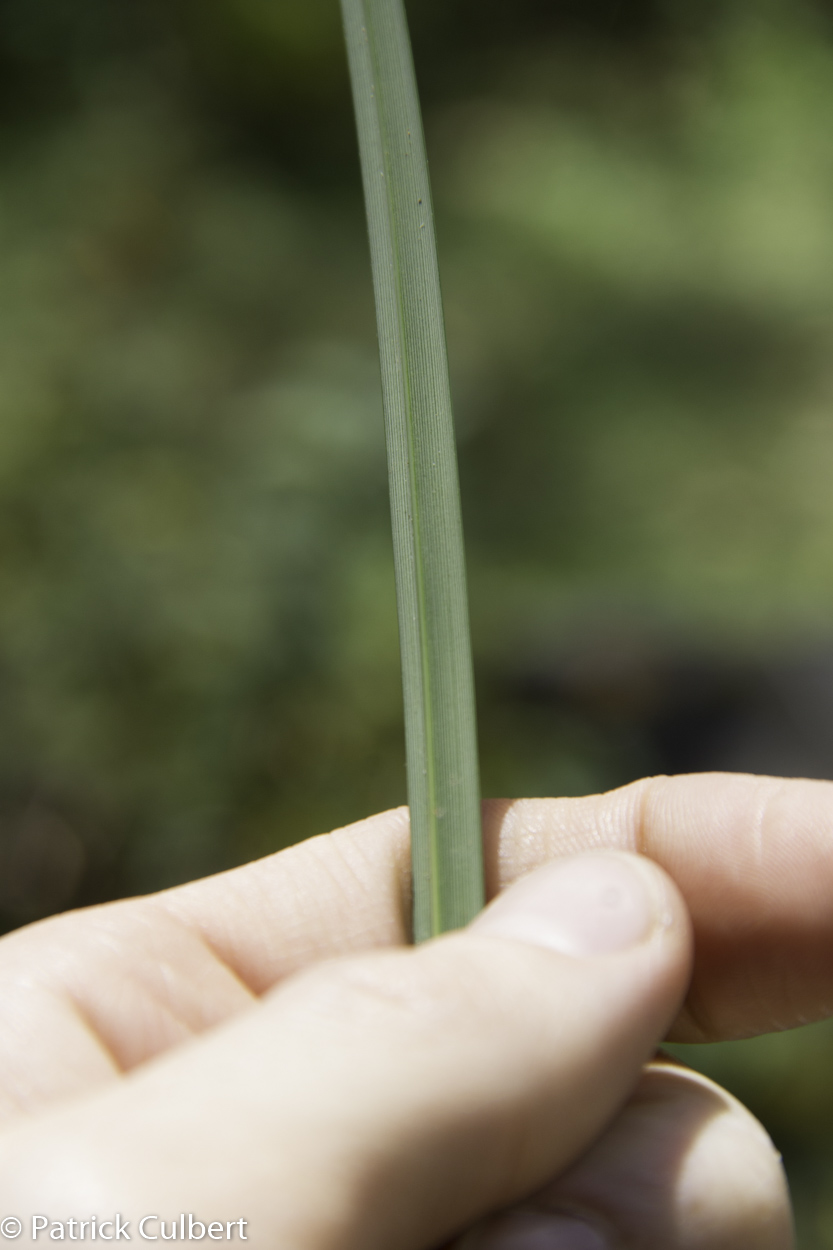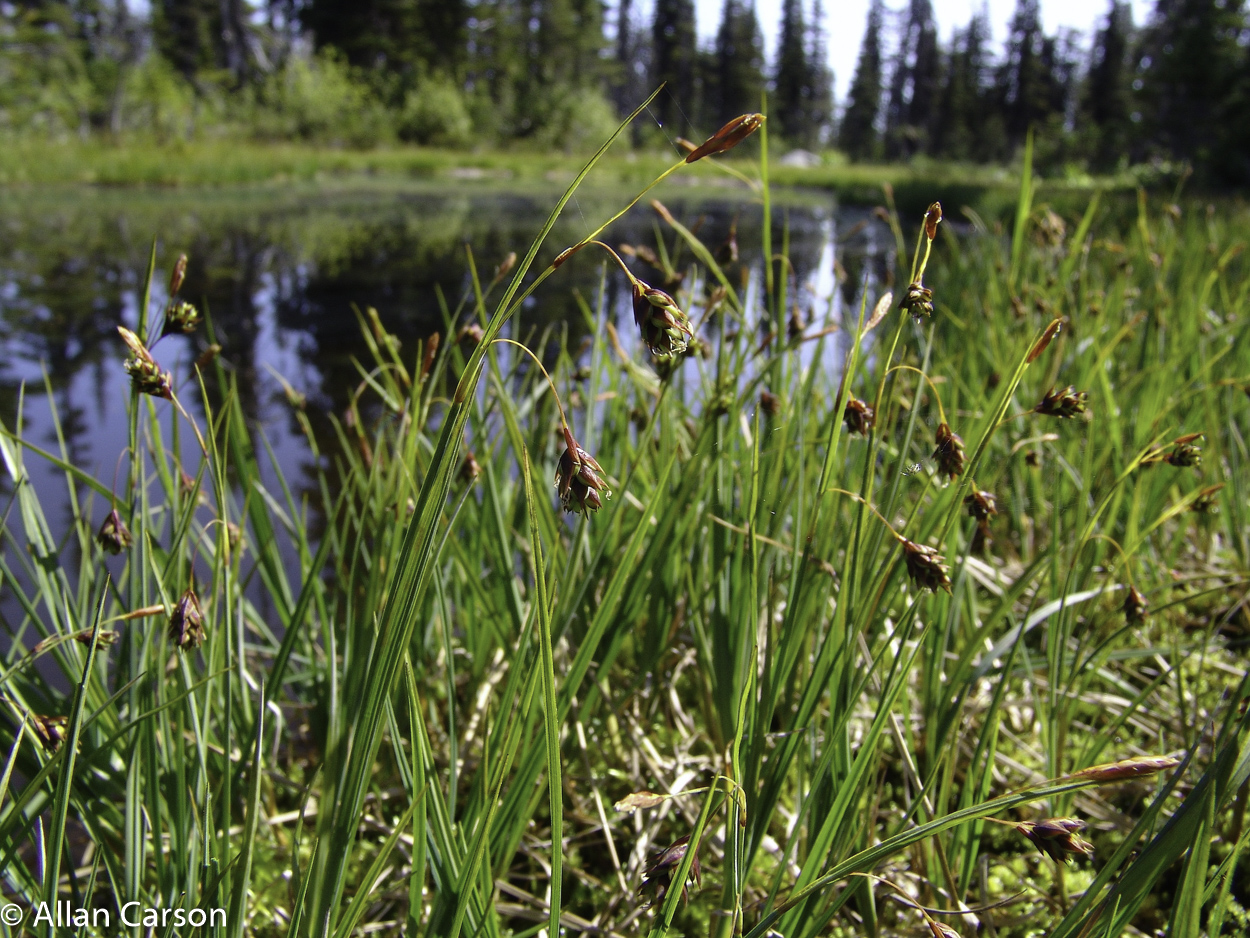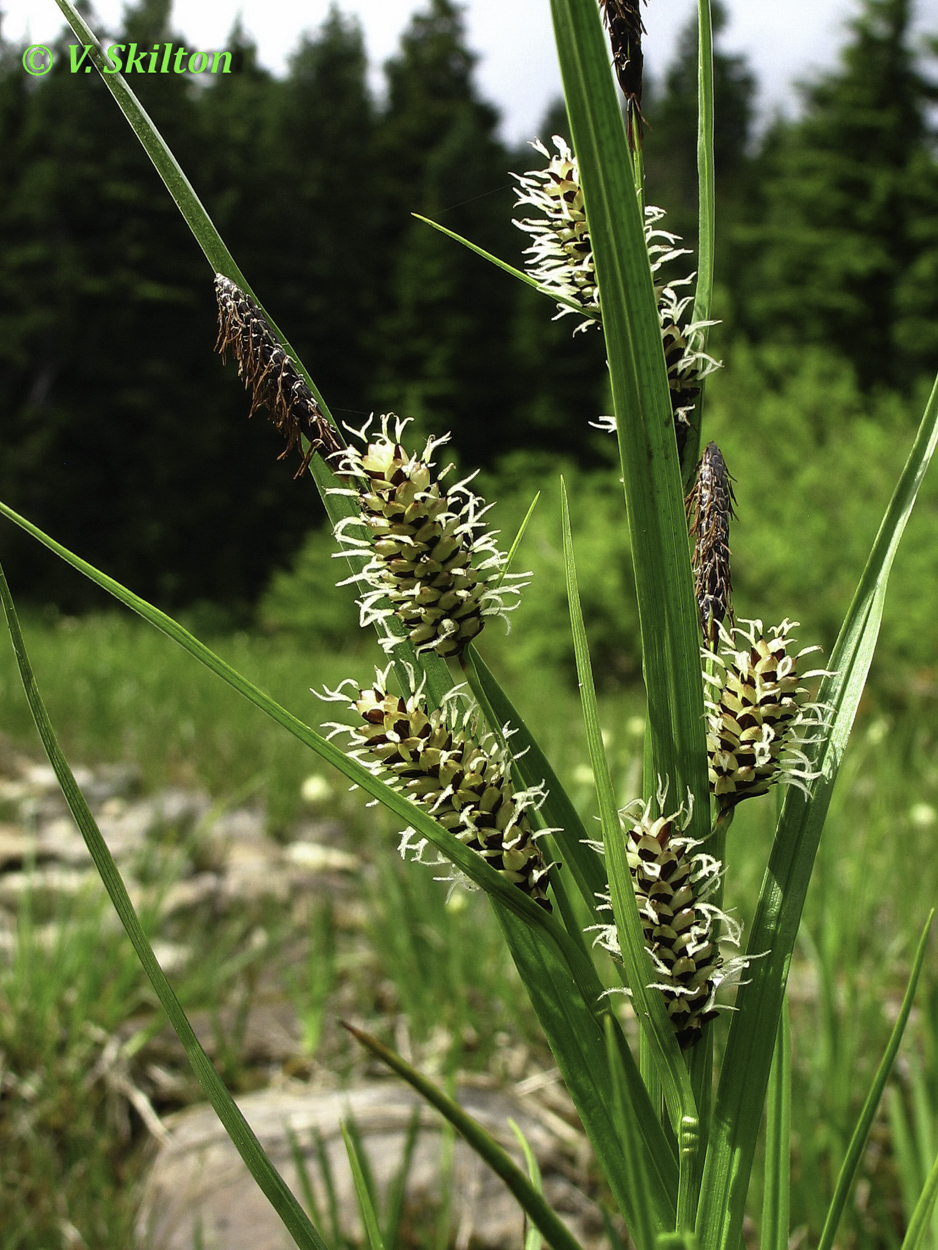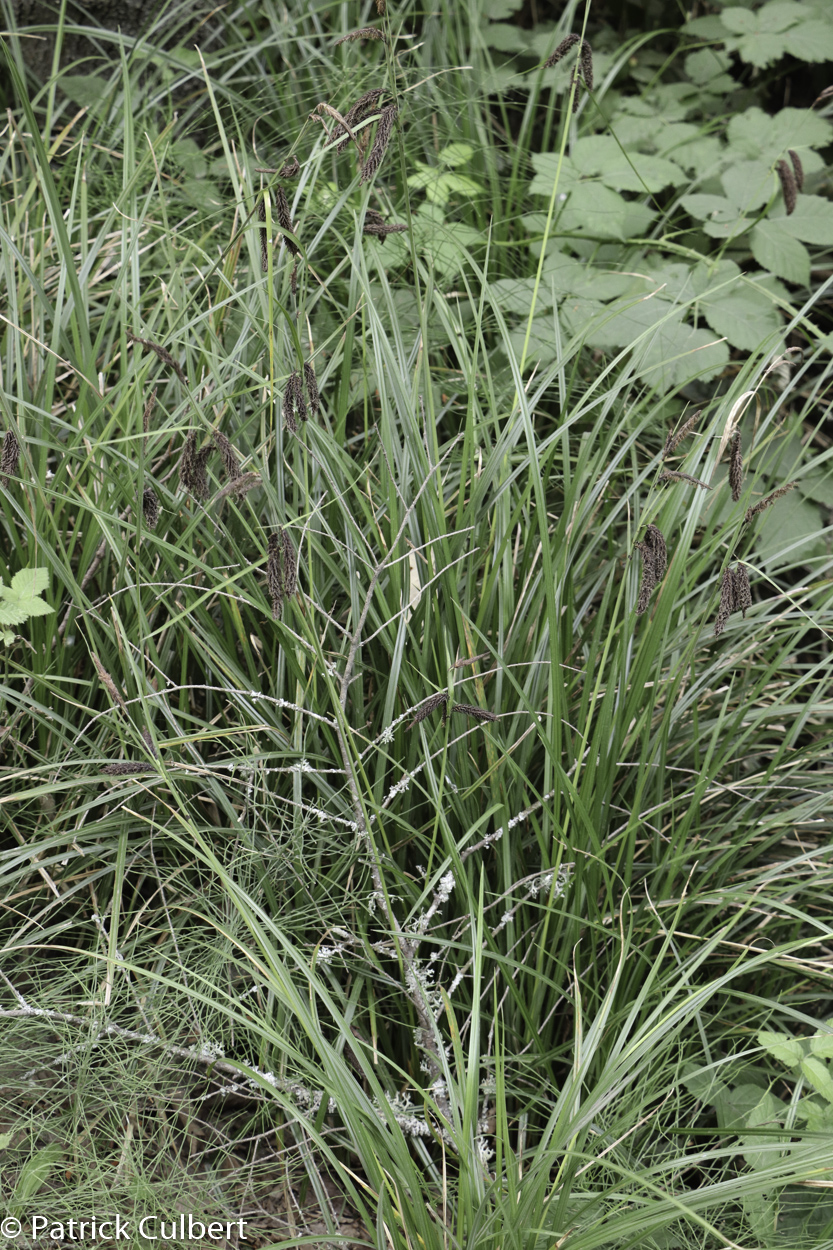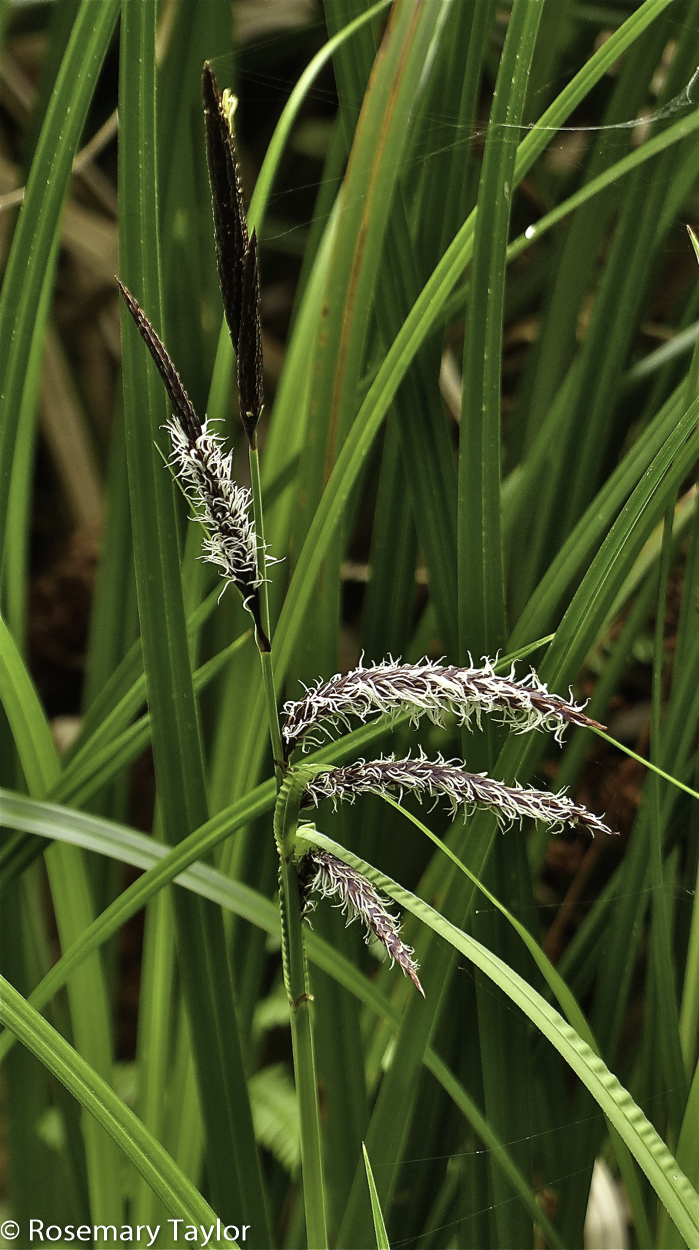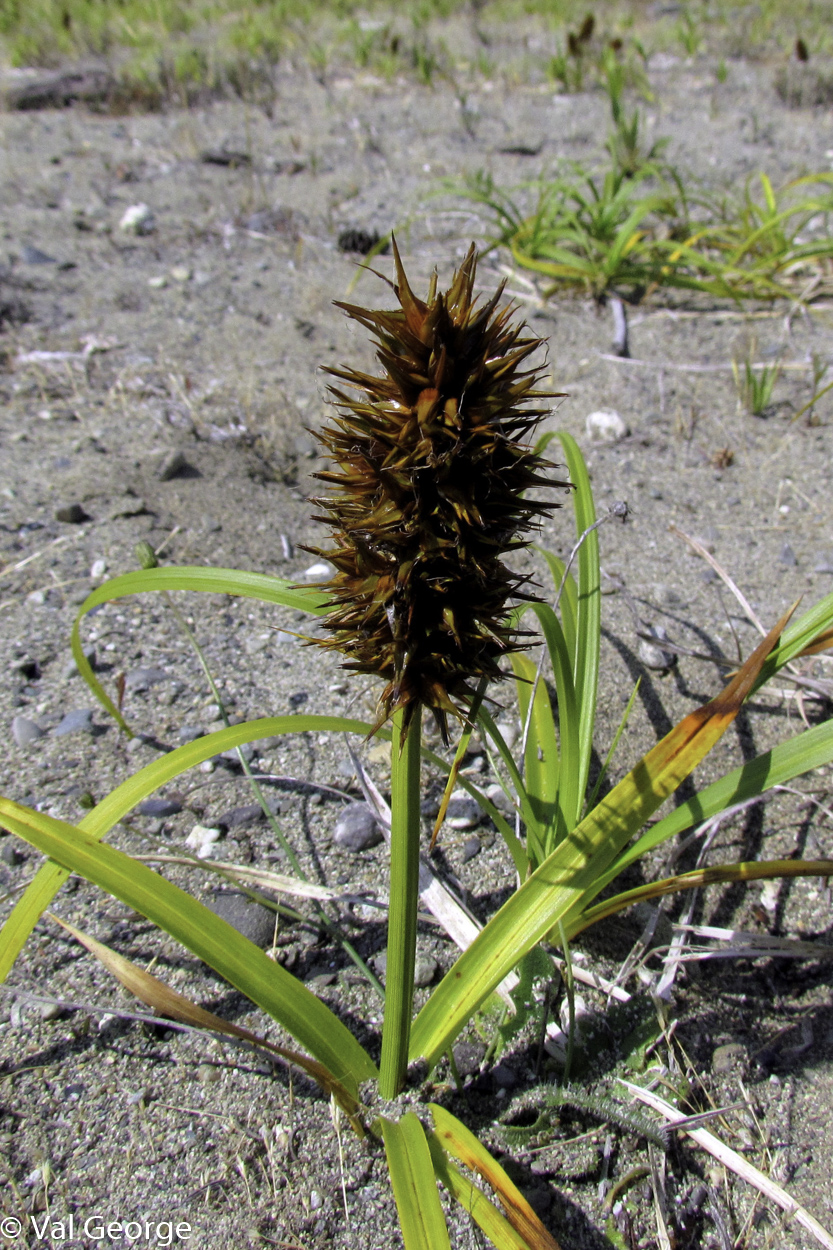Carex spp. – sedges
Common Name
sedges
Family
Cyperaceae
Scientific Name
Carex spp.
Soil Moisture Regime (SMR)
- Wet (W)
- Very Wet (VW)
Soil Nutrient Regime (SNR)
- Medium (M)
- Rich (R)
Video link
General / Habitat
- The most species-rich genus in the sedge family
- All are perennial
- Most species prefer wet forests and swamps but others thrive on harsh, exposed soils above the treeline
Key Identifying Characteristics
- Form: Sedges can be identified by their triangular, solid cross-section (sedges have edges and rushes are round).
- Leaves: Long, parallel-veined leaves
- Flowers: Borne in solitary spike. Flowers almost always unisexual (flowers either bear male or female parts)
- Fruit: Ovary and fruit are enclosed in a membranous sac (perigynium) in the axil of a single scale-like bract. The perigynium often extends into a beak which is divided at the tip into two teeth. The characteristics of the perigynium are often used to distinguish between species.
- Other: Carex species can be very difficult to tell apart. Often a hand lens or microscope is required for close examination of the perigynium and other structures.
Interesting Characteristics
- Important forage and habitat for a number of species
- Carex displays one of the most dynamic chromosome counts of any flowering plants, with species ranging from 6 to more than 60 chromosomes, along with considerable among-population variation within species
Sources
Douglas, G.W. et al (Editors). 1998-2002. Illustrated Flora of British Columbia, Volumes 1 to 8. B.C. Min. Environ., Lands and Parks, and B.C. Min. For., Victoria, B.C.
Pojar, J. and A. MacKinnon. 2014. Plants of Coastal British Columbia Including Washington, Oregon & Alaska. B.C. Ministry of Forestry and Lone Pine Publishing. Vancouver, B.C.

